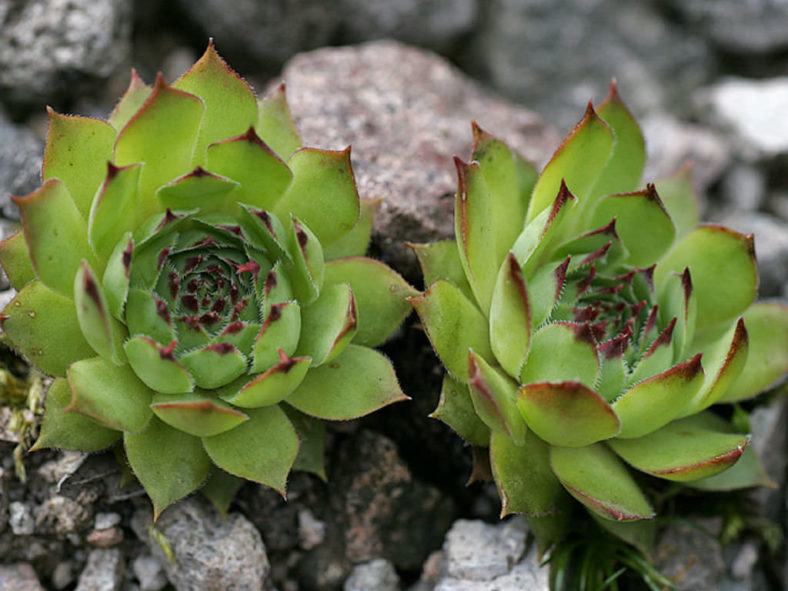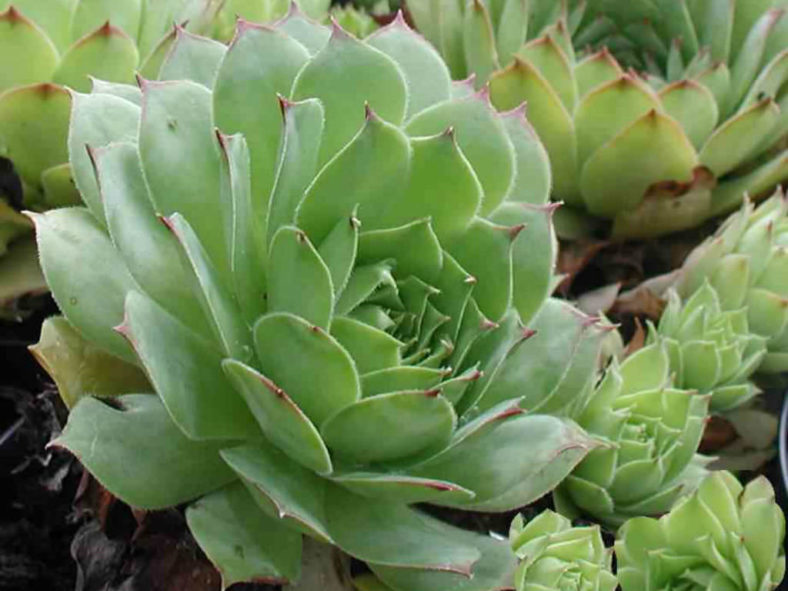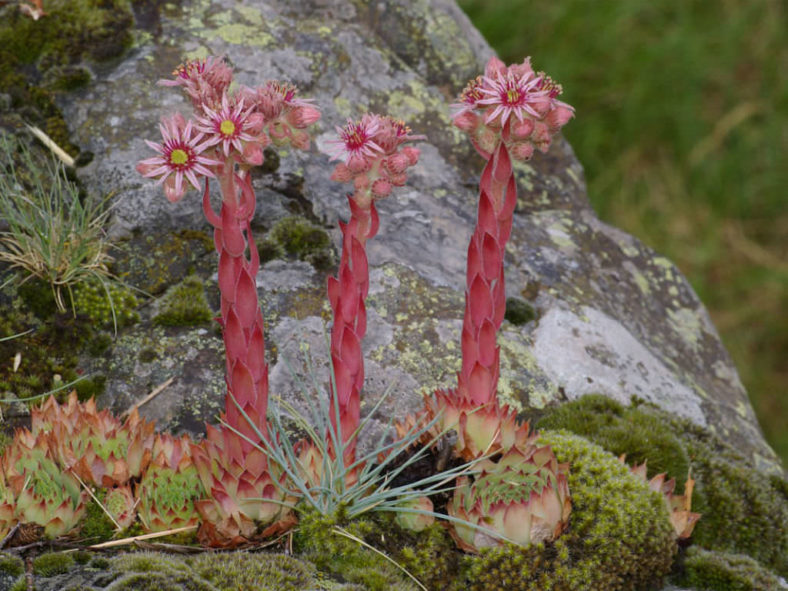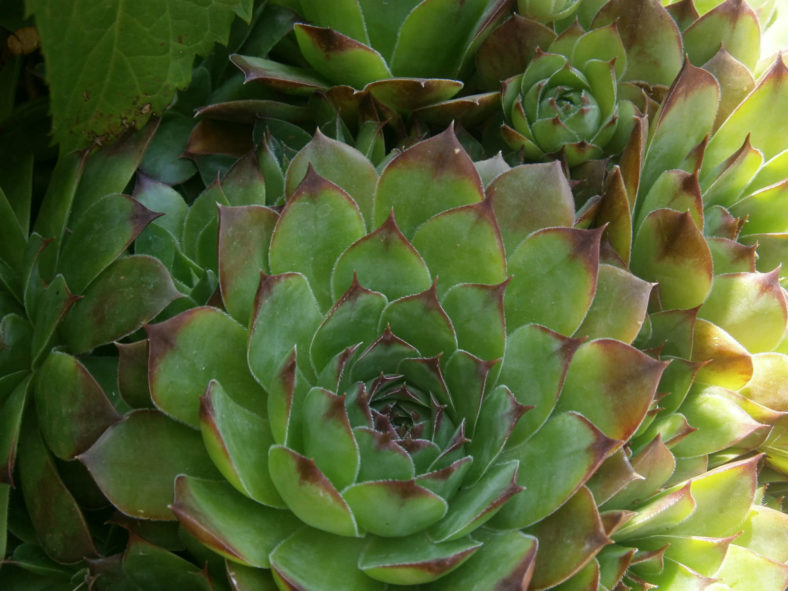Scientific Name
Sempervivum tectorum L.
Common Name(s)
Houseleek, Liveforever, Common Houseleek, Hen and Chickens, Old Man and Woman, Roof Houseleek, Hens and Chicks, Bullock's Beard, Bullock's Eye, Devil's Beard, Earwort, Fuet, Healing Blade, Homewort, Imbroke, Jove's Beard, Jupiter's Beard, Jupiter's Eye, Poor Jan's Leaf, Roof Foil, Sengreen, St Patrick's Cabbage, Thunder Plant, Welcome-home-husband-however-drunk-you-be
Synonym(s)
Sedum tectorum, Sempervivum tectorum subsp. tectorum
Scientific Classification
Family: Crassulaceae
Subfamily: Sedoideae
Tribe: Sedeae
Subtribe: Sedinae
Genus: Sempervivum
Etymology
The specific epithet "tectorum" (pronounced "tek-TOR-um") means "of roofs, roofing" and refers to the traditional growing on the roofs of this species.
Origin
Sempervivum tectorum is native to the Mountains of Western, Central, and Southern Europe, from the Pyrenees to the Alps, Apennines, and Dinarides.
Description
Sempervivum tectorum is a mat-forming succulent that forms rosettes of fleshy, green leaves variably tinged with red and usually with a purple tip. The rosettes typically grow about 4 inches (10 cm) in diameter and produce offsets attached to the mother rosette by stout stolons that can grow up to 1.6 inches (4 cm) long. The leaves are oblong-lanceolate to obovate, glabrous or shortly glandular-pubescent, with conspicuously white cilia along the margins. They can measure up to 2.4 inches (6cm) long and 0.6 inches (1.5 cm) wide.
In summer, an upright, leafy, pubescent flower stalk rises from the mother rosette, topped with cymes of red-purple flowers. The flower stalk can grow up to 12 inches (30 cm) tall.

Hardiness
USDA hardiness zones 3b to 11b: from −35°F (−37.2°C) to 50°F (10 °C).
How to Grow and Care
Common Houseleek can be grown from seeds, seedlings, or by dividing offsets.
Don't plant your Common Houseleeks too deeply. Dig a shallow hole and spread the roots. Cover the plant's crown and gently tamp the soil to firm it. Water lightly, but you don't need to water newly planted Common Houseleek daily as you would with non-succulents. Common Houseleeks need to let their roots dry out between waterings.
Seeds can be sprinkled on top of a soil or gravel mix and kept moderately moist until germination. Once they sprout, sprinkle some fine gravel around them as mulch. Seeds are usually started in pots and then transferred to the garden as seedlings. You can start your seeds in the fall and transplant them in the spring.
Common Houseleeks will spread by underground roots. Each plant multiplies by at least 4 in a growing season by producing tiny offset plantlets all around the perimeter of the "hen." These are the "chicks." The chicks can be snapped off and replanted elsewhere at any time.
Once established, maintenance of Common Houseleeks is minimal. You must remove the old hens after they flower and divide chicks as needed. Except in extremely hot, dry situations, you will not even need to give them supplemental water.
Learn more at How to Grow and Care for Sempervivum.
Uses
For centuries, the juice and leaves have been used in folk remedies for their cooling, anti-inflammatory, astringent, and diuretic properties. Bruised leaves of the fresh plant or the plant's juice can be used as poultices for burns, scalds, ulcers, and any inflammation, as the pain is quickly reduced. Honey, mixed with the juice, helps relieve the pain of mouth ulcers.
Learn more at Houseleek: Superstitions, History, and Medicinal Benefits.
Cultivars and Hybrids
Links
- Back to genus Sempervivum
- Succupedia: Browse succulents by Scientific Name, Common Name, Genus, Family, USDA Hardiness Zone, Origin, or cacti by Genus
Photo Gallery
Click on a photo to see a larger version.


